Traduction générée automatiquement
Montrer le texte original
Montrer le texte traduit
This is a wonderful English antique George III sterling silver 10 inch salver, by the world famous silversmith Paul Storr. It has clear hallmarks for London 1811 and the maker's mark of Paul Storr. It is typical of his work with the raised gadrooned rim with anthemion on shells and with anthemion at intervals, on four fabulous foliate bracket feet. The salver is engraved with a crest and motto and the underside is later engraved Charlotte J. Parke from C. J. Parke, March 1893' The centre is engraved with a crest above a motto 'True and Fast' and I have researched this crest: The Crest of Parke The crest as engraved upon this George III English Sterling Silver Footed Salver by Paul Storr hallmarked London 1811 is that of the family of Parke. It may be blazoned as follows: Crest: A stag’s head couped sable holding in the mouth a key or Motto: True and fast The family of Parke originally hailed from the County of Cumberland in the northeast of England1 later settling in the County of Dorset at Henbury House, Sturminster Marshal, near Wimborne. Given the evidence of the inscription found on the underside of the salver ‘Charlotte J. Parke from C. J. Parke, March 1893’ it was undoubtedly at one time in the possession of Charles Joseph Parke (died 9th March 1893) of Henbury House aforesaid and gifted to Charlotte Josephine Parke (baptised 4th January 1857 died 2nd January 1941) his third daughter by his wife, Ellen Mary Ethelston. I would venture the following hypothesis that the salver was bequeathed to Charlotte in her father’s will that was granted probate at London on the 20th May 1893. The ‘March 1893’ of the inscription acts as a remembrance of the month of the death of her father. It was noted that Charlotte’s father left an estate worth some £66,892, 19 shillings and one pence, a very considerable sum in the last decade of the 19th Century and even thereafter. Charlotte never married and was living at the time of her death at The Coppice, Sixpenny Handley in the County of Dorset. Her will was proved for probate at Llandudno on the 25th March 1941. She left an estate worth £18,866, 10 shillings and 4 pence. Again, a comfortable sum in 1941. See the photo of Henbury House, Sturminster Marshal, near Wimborne, Co. Dorset. The former seat of the Parke family. The house was destroyed by fire, the remains of which were demolished in the 1990's. There is no mistaking its unique quality and design, which is sure to make it a treasured piece by any discerning collector. Condition: In excellent condition with clear hallmarks and no dings, dents or signs of repair. Please see photos for confirmation. Dimensions in cm: Height 2 x Width 26.5 x Depth 26.5 Weight 0.69 kg Dimensions in inches: Height 1 inch x Width 10 inches x Depth 10 inches Weight 1.5 lbs Paul Storr born in London England in 1771, was to become one of the most talented silversmiths of the nineteenth century. Today his legacy of exceptionally well crafted silver, found worldwide in museums and private collections, leaves one in awe when compared to that of his contemporaries.After having served a seven year apprenticeship from the age of 14, he began his career in 1792 when he went into a brief partnership with William Frisbee. This did not last and in 1793 a new mark, (his initials ‘P S’) was entered. By the beginning of the nineteenth century he had established himself as one of London’s top silversmiths producing, amongst others, commissions for Royalty. In 1801 he married Elizabeth Susanna Beyer with whom he was to have ten children. In 1807 Paul Storr entered into a working relationship with Philip Rundell and by 1811 was a partner, and managing the workshops for Rundell, Bridge & Rundell. During this period he kept his own marks and separate workshop. However it was through Rundell, Bridge & Rundell who were appointed Goldsmith in Ordinary to George III in 1804 that his reputation as a master silversmith grew. His talents lay in being able to transform ideas and designs from Rundell, Bridge & Rundell’s designers, William Theed II, the chief modeller and head of the design department, and later John Flaxman II who succeeded him in 1817. During this period Rundell, Bridge & Rundell’s reputation grew due to the patronage of the Prince Regent (later George IV).
Il s'agit d'un magnifique saloir anglais antique en argent sterling George III de 10 pouces, réalisé par l'orfèvre de renommée mondiale Paul Storr. Il porte des poinçons clairs pour Londres 1811 et la marque de Paul Storr. Il est typique de son travail, avec son bord à godrons en relief, avec un anthemion sur les coquilles et un anthemion à intervalles, sur quatre fabuleux pieds en forme d'étriers feuillagés. Le plateau est gravé d'un écusson et d'une devise, et le dessous est ultérieurement gravé Charlotte J. Parke from C. J. Parke, March 1893. Le centre est gravé d'un écusson au-dessus d'une devise " True and Fast " (Vrai et rapide) : L'écusson de Parke L'écusson gravé sur ce saloir à pied en argent sterling anglais de George III par Paul Storr, poinçonné à Londres en 1811, est celui de la famille Parke. Il peut être blasonné comme suit : Cimier : Une tête de cerf coupée de sable tenant dans sa gueule une clé ou Devise : True and fast (Vrai et rapide) La famille Parke était originaire du comté de Cumberland dans le nord-est de l'Angleterre1 et s'installa plus tard dans le comté de Dorset à Henbury House, Sturminster Marshal, près de Wimborne. Au vu de l'inscription trouvée sous le plateau, "Charlotte J. Parke from C. J. Parke, March 1893", il ne fait aucun doute que Charles Joseph Parke (décédé le 9 mars 1893), de Henbury House, a possédé le plateau à un moment donné et l'a offert à Charlotte Josephine Parke (baptisée le 4 janvier 1857 et décédée le 2 janvier 1941), sa troisième fille née de son épouse, Ellen Mary Ethelston. J'émets l'hypothèse suivante : le saloir a été légué à Charlotte dans le testament de son père qui a été homologué à Londres le 20 mai 1893. L'inscription "mars 1893" rappelle le mois de la mort de son père. Le père de Charlotte a laissé un patrimoine d'une valeur de 66 892 £, 19 shillings et un pence, une somme considérable pour la dernière décennie du XIXe siècle et même après. Charlotte ne s'est jamais mariée et vivait au moment de sa mort à The Coppice, Sixpenny Handley dans le comté de Dorset. Son testament a été homologué à Llandudno le 25 mars 1941. Elle laisse un patrimoine d'une valeur de 18 866 £, 10 shillings et 4 pence. Encore une fois, une somme confortable en 1941. Voir la photo de Henbury House, Sturminster Marshal, près de Wimborne, Co. Dorset. Il s'agit de l'ancien siège de la famille Parke. La maison a été détruite par un incendie et les vestiges ont été démolis dans les années 1990. La qualité et le design uniques de cet objet sont indéniables et en feront une pièce précieuse pour tout collectionneur averti. État de conservation : En excellent état, avec des poinçons clairs et sans bosses ni signes de réparation. Voir les photos pour confirmation. Dimensions en cm : Hauteur 2 x Largeur 26.5 x Profondeur 26.5 Poids 0.69 kg Dimensions en pouces : Hauteur 1 pouce x Largeur 10 pouces x Profondeur 10 pouces Poids 1.5 lbs Paul Storr, né à Londres en Angleterre en 1771, allait devenir l'un des orfèvres les plus talentueux du XIXe siècle. Après avoir suivi un apprentissage de sept ans à partir de l'âge de 14 ans, il commença sa carrière en 1792 en s'associant brièvement avec William Frisbee. Ce partenariat n'a pas duré et, en 1793, une nouvelle marque (ses initiales "P S") a été créée. Au début du dix-neuvième siècle, il s'est imposé comme l'un des meilleurs orfèvres de Londres, réalisant, entre autres, des commandes pour la royauté. En 1801, il épouse Elizabeth Susanna Beyer, avec qui il aura dix enfants. En 1807, Paul Storr a commencé à travailler avec Philip Rundell et, en 1811, il était associé et dirigeait les ateliers de Rundell, Bridge & Rundell. Pendant cette période, il a conservé ses propres marques et son atelier séparé. Cependant, c'est grâce à Rundell, Bridge & Rundell, qui ont été nommés orfèvres ordinaires de George III en 1804, que sa réputation de maître orfèvre s'est développée. Son talent réside dans sa capacité à transformer les idées et les dessins des concepteurs de Rundell, Bridge & Rundell, William Theed II, le modeleur en chef et le chef du département de conception, et plus tard John Flaxman II, qui lui succède en 1817. Au cours de cette période, la réputation de Rundell, Bridge & Rundell s'est accrue grâce au patronage du Prince Régent (futur George IV).
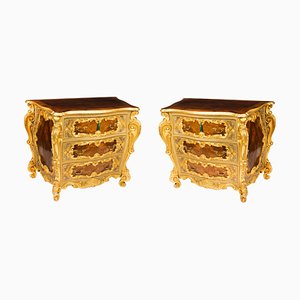

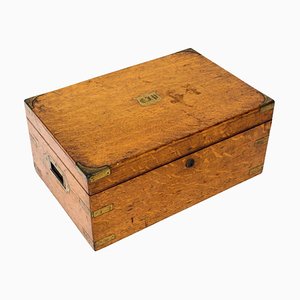

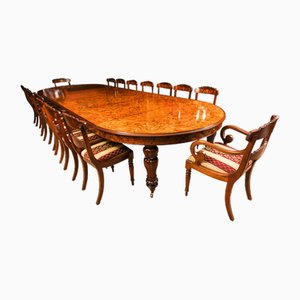
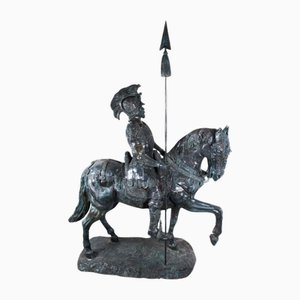

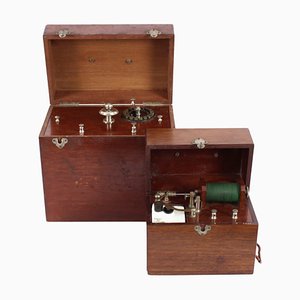
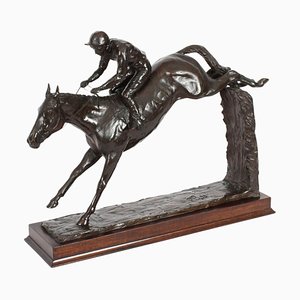
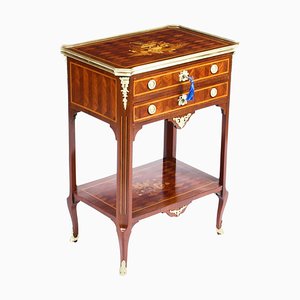
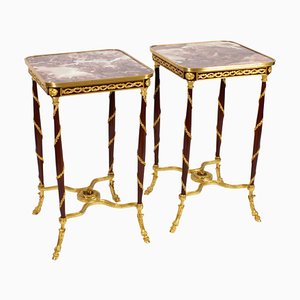
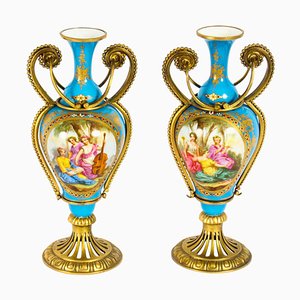
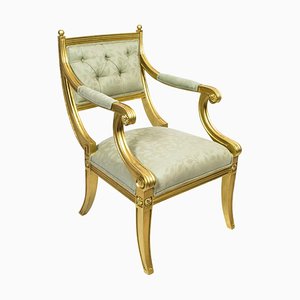
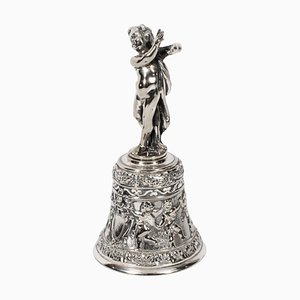
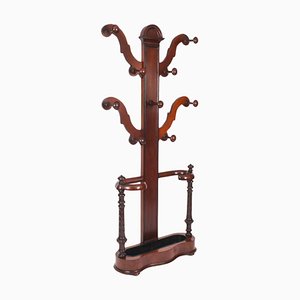

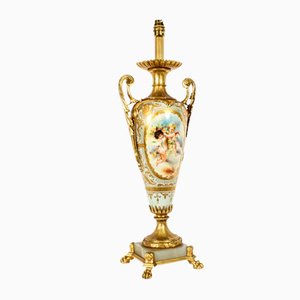

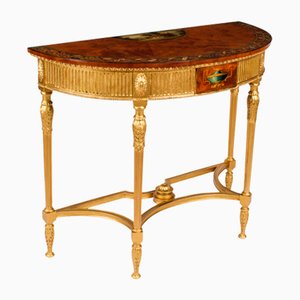
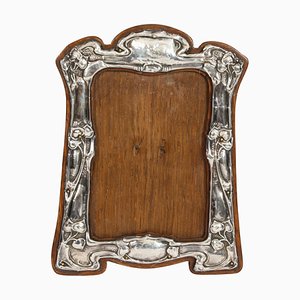
Contactez-nous
Faire une offre
Nous avons remarqué que vous êtes nouveau sur Pamono !
Veuillez accepter les Termes, Conditions et Politique de Confidentialité
Contactez-nous
Faire une offre
Vous y êtes presque!
Pour suivre votre conversation sur la plateforme, merci de compléter votre enregistrement Pour procéder avec votre offre sur la plateforme, veuillez compléter l’enregistrement.Envoyé!
Merci pour votre message, un membre de notre équipe vous contactera rapidemment
Si vous etes un professionnel du design, merci de vous inscrire ici pour pouvoir profiter de bénéfices exclusifs